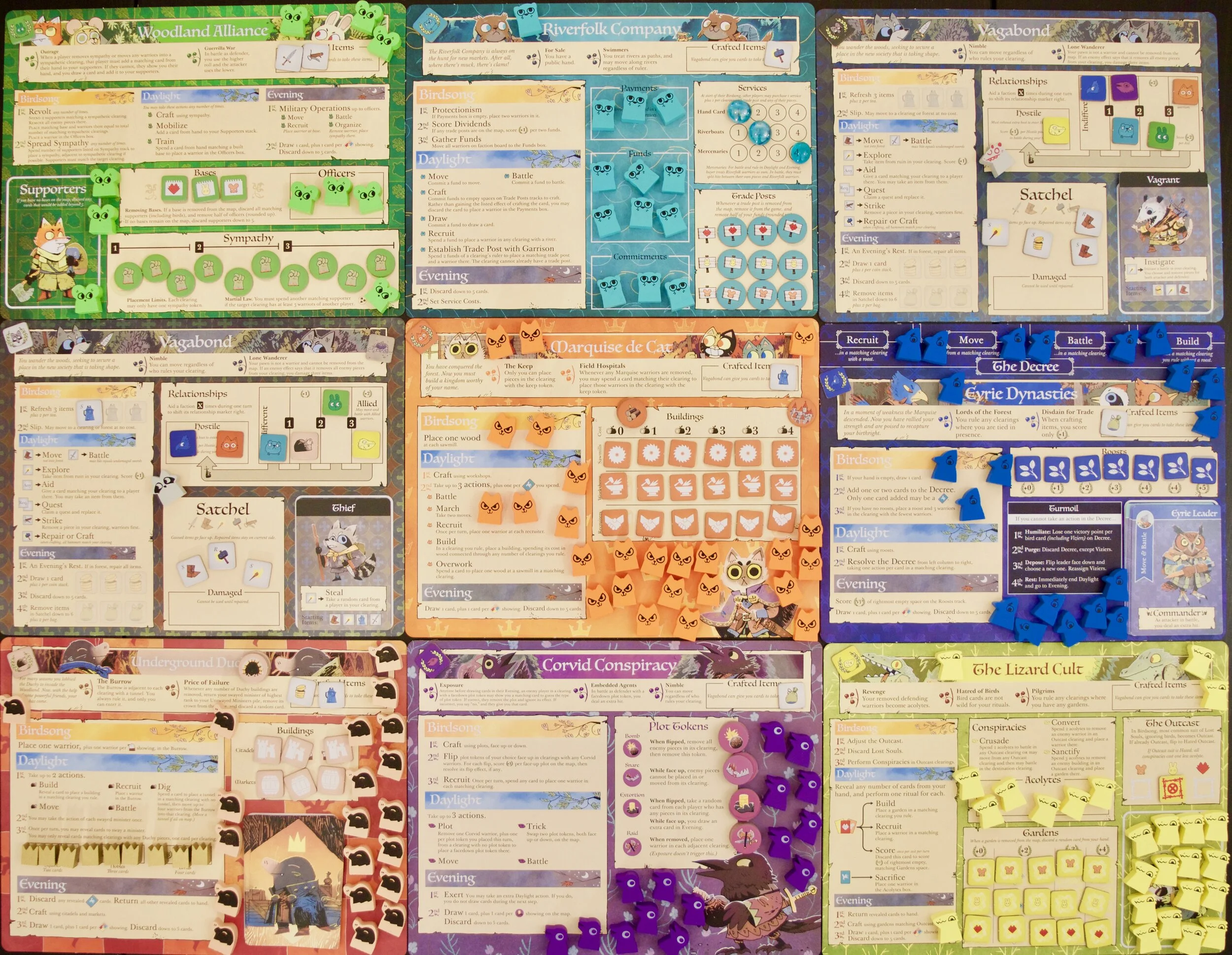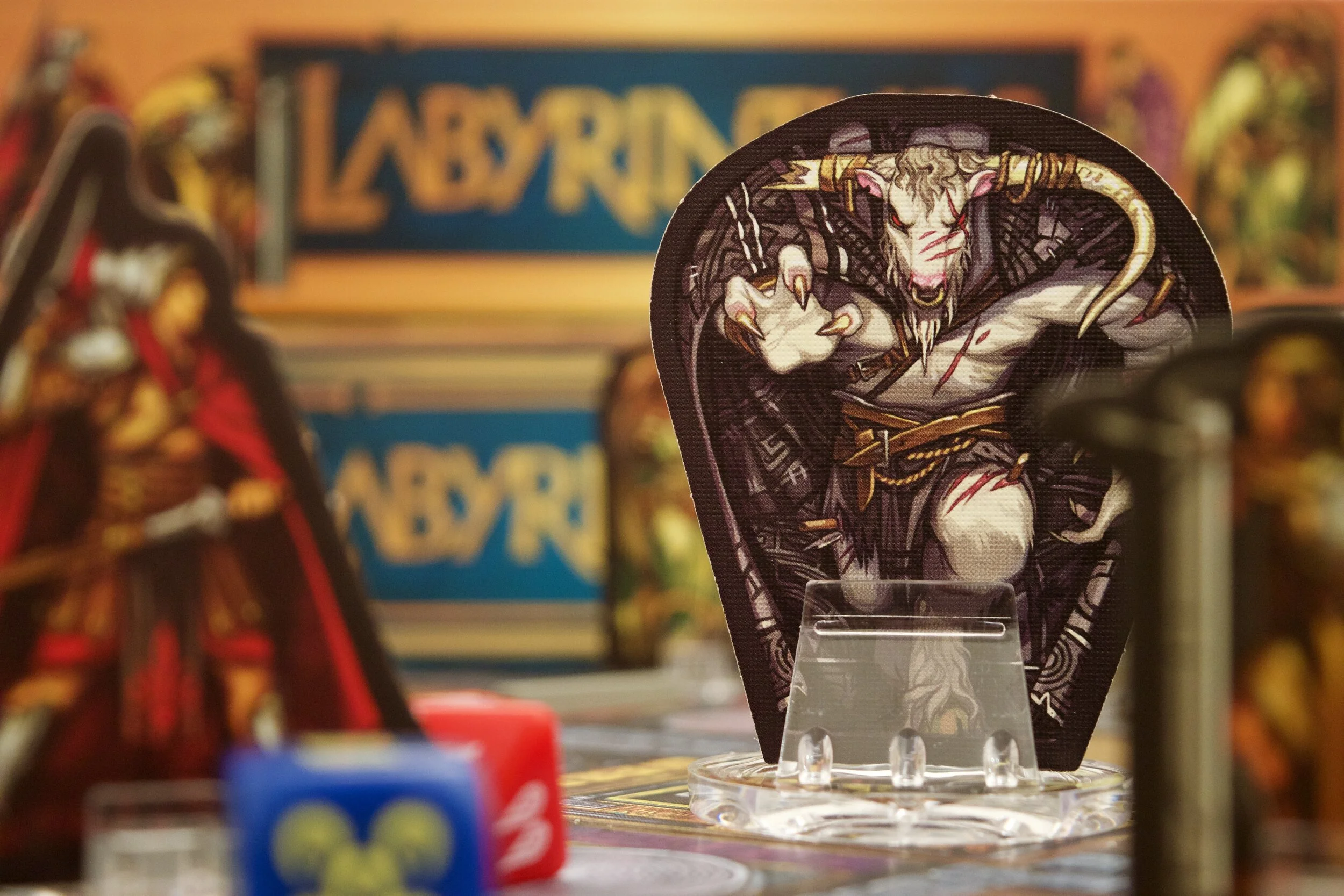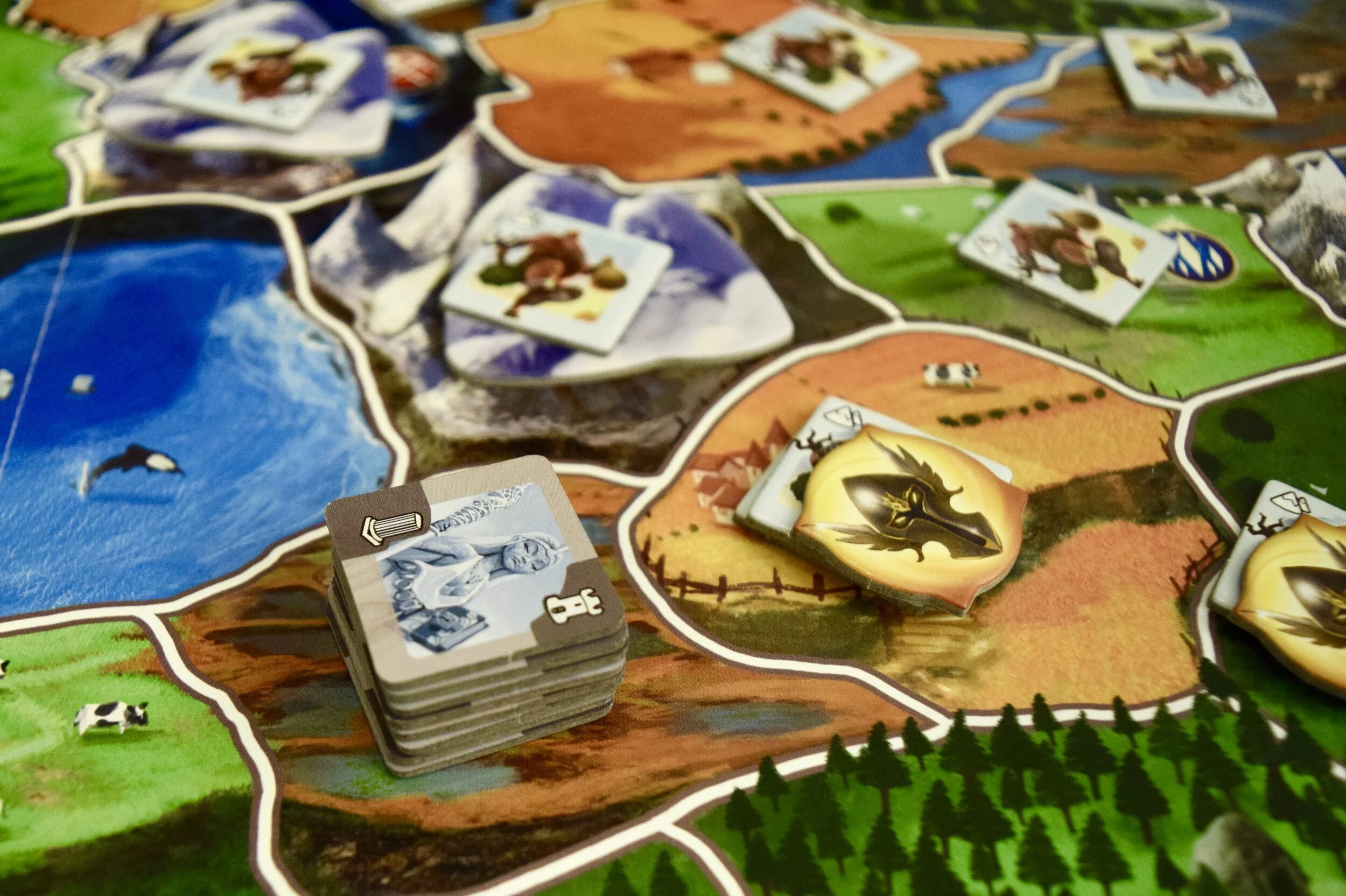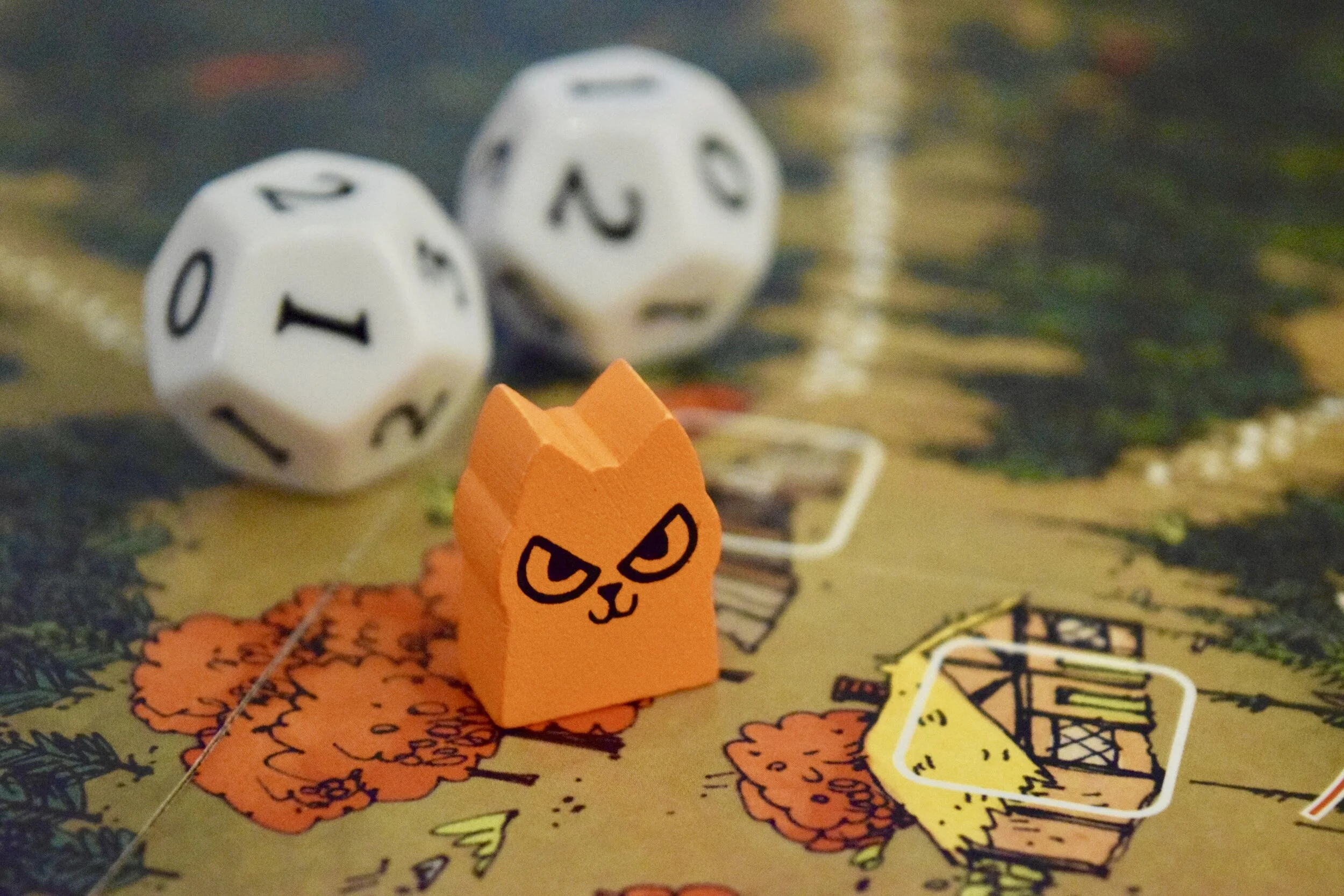BLOG: My Argument for Asymmetrical Games as Gateways
Okay, before you go on Twitter and absolutely blast this idea to Planet X—Give me a chance to explain why I think that asymmetrical board games are the absolute BEST gateway games.
For those of you who may be newer to the hobby, there is some debate around the exact definition of a GATEWAY GAME. But, for the sake of this blog—and your time—I don’t really want to hash all that out. For my purposes, a gateway game is simply a game that can introduce someone to “hobby” board gaming. That is, to get everyday folks to go a step further than Monopoly or Uno. (But, if you want to read some great discourse on the topic, here’s a Twitter thread by game designer Eric Lang.)
Choosing an asymmetrical game for newcomers may seem, especially at first glance, completely insane. But, why? Classic gateway games include CATAN and Pandemic, even Ticket to Ride. Each of these games has something unique to offer a new gamer that will draw them in.
For Catan, there’s the idea of randomness masking as strategy. It’s a great game to get your friends all yelling at cardboard together. Ticket to Ride offers the comfort of a family game, but the competition of a true strategy game.
And there’s Pandemic, perhaps the King of all gateway games. It’s often someone’s first introduction to a game they’ve never heard of. Maybe it’s the first time they are introduced to the idea of Cooperative gaming—or gaming where the players play on the same side, winning and losing together. The moment you shuffle the infection discard and place it back on top of the deck…that’s a game-changer.
Pandemic is not an EASY game. The losses hit hard when you’re all working together. But, there’s something addicting about the rhythm of the game—that’s what gets you coming back. That is what makes it the perfect gateway.
So, what about asymmetric gaming? Well, forgive me for one last digression to explain exactly what asymmetrical games are. ASYMMETRICAL GAMES are games wherein the players take on different roles, with different tasks, and sometimes even completely different win conditions. Examples span from family games like Villanious to cult games like Root and even highly complex two-player games like War of the Ring.
As I said, in these games, each player must—essentially—learn their own rules. The best rule books for asymmetrical games will come with Learn to Play guides for each player.
What makes these games so perfect for newcomers? Just that—the agency to learn your own character and decide on your own strategy!
There’s no quarterbacking in asymmetrical games. In so many gateway games experienced players can steamroll new players. Don’t say you never do this. Of COURSE you do! Maybe not with strangers. But it’s natural, when you see an outbreak about to occur, to lean over to your friend and say “Hey, you know that with your special power, you can make it to Bogota and clear those cubes in one turn.”
More than that, asymmetrical games give newcomers the chance to have that “aha” moment that experienced gamers love. I’m talking about the moment, a few turns or even halfway through a game, when you lean back in your chair and finally understand, “Ahaaa. This is what I’m playing.”
There are no games as addicting as asymmetrical games. No games better suited to waking up the morning after a first-play saying “Okay, we gotta play Root again tonight. I was thinking about it, and now I know how to win,” to “Okay, we gotta play Vast again tonight. I was thinking about it, and I want to play the Spider this time. You can be the stinking Paladin.”
Villainous is a great example of this. (I have my issues with Villanious as a game, but that is a blog for another time.) Unlike Root (a merciless game, and frankly not the best “gateway” example, though I love it), Villanous is no harder than other great gateway games. It’s the perfect asymmetrical game to bring people to the table.
It’s based on an IP (Disney or Marvel) that is widely beloved. This gives new players something thematic and appealing to latch on to right away.
The Learn to Play guides are super easy to read and understand.
And, it’s pretty quick. There’s plenty of time to play twice or even thrice, in the span of an average game night.
This is a gateway game for new adults and even kids. And it’s terrific for all the reasons I already described.
I don’t think we need to candy-coat gaming to make it accessible to everyone. People are much more likely to fall in love with gaming through a game that is incredible and unlike anything they THOUGHT a game could be.
It also cannot go unstated that, as someone who feels very strongly about widening representation in board gaming, I think asymmetrical games do the real work. Newcomers and hobbyists alike are more likely to see themselves represented in a game with a wide variety of wildly different characters. And, I don’t just mean PHYSICALLY represented! Maybe you feel oddly “seen” by the Manor in Vast. As we joked in a Tik Tok “Trapping everyone in a victorian mansion to force them to deal with YOUR trauma? That’s the gay experience.”
Now, I should be clear—asymmetrical games won’t be right for everyone, certainly not ALL asymmetrical games will be. And, I think it would be BAD to bring your 12-year-old cousin into the hobby by forcing them to set up and play War of the Ring. But, I do think that if you’re having trouble convincing a friend how truly mesmerizing (and groundbreaking and cool and fun and bonkers and pretty…) board games can be, you should try pulling out an asymmetrical game.
Full disclosure—Smallworld was my gateway game. You win by having the most Victory Points, so it’s not totally, fully, completely asymmetrical. But, the variable player powers and the way that creates endless combinations for replayability…Well, pal, it changed the way I think about gaming (and life???).
Let me end you with these, completely arbitrary lists:
(NOTE FOR MY BG GEEKS: I’m including a fairly loose definition of asymmetrical, including asymmetric player powers. )
Asymmetrical Games That are Good Gateways
Villanous
Smallworld
Vast
Mysterium
Jaws
Unmatched: Cobble & Fog
One Night Ultimate Werewolf
IceCool (Okay, should this count? I’m going to count it.)
Gloomhaven Jaws of the Lion
Harry Potter: Hogwarts Battle
Lords of Waterdeep
Labyrinthos
Asymmetrical Games That are Bad Gateways
Root
War of the Ring
Star Wars: Rebellion
Cosmic Encounters
Spirit Island
Freedom: The Underground Railroad
Gloomhaven
Arkham Horror LCG
Eldritch/Arkham Horror
I’d love to know what you think of this crazy idea! Have you ever started someone on an asymmetric game? How’d it work out?
Shoot me a message or just start DM-ing @wereplayingames on Twitter until I answer.








